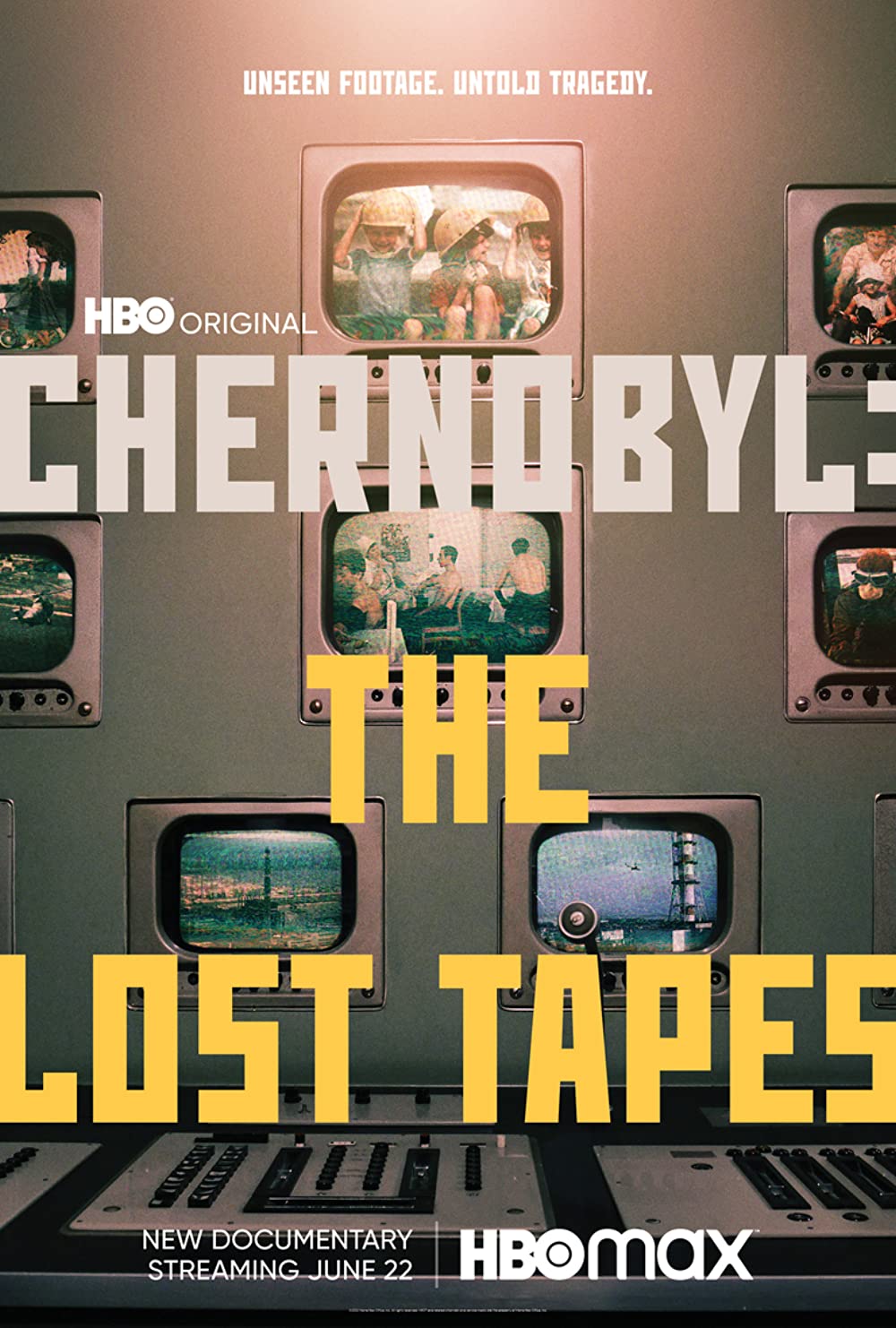When James Jones began filming his harrowing documentary on the nuclear disaster in northern Ukraine two years ago, he had no clue that a dreadful coincidence would make it a must-see.
Chernobyl: The Lost Tapes would have been a significant documentary if it had been broadcast in the last few years; a feature-length blend of audio interviews and completely unheard archive video that puts the 1986 accident into terrifying new perspective. It is so horrifying that it comes out now, just days after Russia launched a full-scale invasion on Ukraine, including an attack on the Chernobyl plant itself.
Obviously, this punctuality was never the goal. When James Jones began working on the film two years ago, he had a different historical event in mind. He explains, “At first, I believed the relevance was Covid.” The early days of the epidemic, like Chernobyl, were distinguished by strange ailments that the local administration attempted to conceal. “I was intrigued by the thought of an unseen foe posing a threat to us,” he explains. “An authoritarian regime was lying about it, and Chinese citizens were publicly expressing their discontent.”
Jones got the idea for the film when he was in lockdown and read two books about the accident – “not healthy for my mental state,” he admits now. “However, it’s really intriguing.” One of them had a footnote that drew his attention. “It was footage filmed the weekend after the catastrophe in Pripyat [in northern Ukraine],” he claims.
Despite the fact that the world’s biggest nuclear explosion had occurred just down the road hours before, sending 400 times more radioactive material into the atmosphere than the Hiroshima bomb, locals were wandering about as if nothing had happened.
Jones says, “You may see women pushing their newborns around and youngsters playing football in the sand.” “Then, due to the extraordinarily high level of radiation, you start to see these white flashes on the film.” It was terrifying.” Nonetheless, the fact that this footage existed prompted him to look for more. He pieced together a blistering documentary from a wealth of sources – national archives, propaganda films, collapsed Soviet documentary studios, western news reports, children and soldiers who happened to have video cameras at the time – that drew a direct line from the USSR’s attempts to downplay the disaster to the fall of the Soviet Union itself.
Despite the fact that Chernobyl is one of those historical occasions about which everyone feels they have a good grasp, thanks in part to Sky’s recent drama series, The Lost Tapes is peppered with bits of film so exceptional that you are unlikely to forget them. Over the explosion site, a clean-up chopper crashes to the earth and brutal footage of human and animal injuries and transformations take place in an irradiated forest, wooden grave markers.
The so-called liquidators, civil and military employees entrusted with sweeping tonnes of contaminated material from the building’s roof by hand after the robot supposed to do the job became overloaded with radiation and malfunctioned, are possibly the most memorable sequence. We observe them improvising rudimentary personal protective equipment by strapping lead sheets to their bodies and nervously joking about vodka. Then there’s a scene in which a camera follows a bunch of liquidators up a ladder and onto the roof. It’s incredible, like being taken into the mouth of hell by a hand. “At the time, it was the most hazardous location on Earth,” Jones adds. “Many of them had no idea what they were getting themselves into.”
The film shot around Pripyat before the accident is equally frightening. It appears to be a utopia. It’s clean and open, and it’s crammed with so many kids that a government official proudly launches a new maternity unit wing to meet demand. Jones acknowledges that the footage has a Soviet propaganda feel to it, but it appears to be a fairly true reflection of how residents felt about their community.
“It just humanised the area,” Jones says of the video. “I enjoyed the drama series, although it is consistently depressing. The only shot of the actual town, I believe, is when a bird falls from the sky and dies. But there was another reality, with people swimming in the sea and going about their daily lives. As a result, when tragedy strikes, you have the distinct impression that you are no longer in the remote world of gloomy Soviet inhabitants. It was a jovial and lively atmosphere.”
Lyudmilla Ignatenko, however, is a character who appears in both the documentary and the series. In the drama, she is played by Jessie Buckley, a Ukrainian woman who was pregnant at the time of the tragedy and whose husband died of acute radiation exposure after attempting to put out the fire.
One of the main interviewees in The Lost Tapes is Ignatenko. She exhibits a similar emotional fortitude in this clip, offering an aural memory of the trauma she experienced with incredible clarity. Jones, amazed, exclaims, “Lyudmilla has been through so much tragedy.”
Some of the more rustic archive footage also serves as a reminder of how recent the accident occurred. You could be fooled into thinking the Chernobyl series – or any official Soviet video from the time, much of which was still filmed on black and white film to save money on equipment upgrades – took place in the 1950s or 1960s if you watched the uniformed actors. However, Jones’s plethora of new video footage, shot in stunningly era-appropriate form, helps to highlight how recent this event was in terms of history.
“It feels very 1980s,” Jones says. “Actually, there was a beautiful clip I really wanted to use where there’s an 80s disco with flashing lights and DJs and stuff like that.” However, including it felt a little off-key tonally.”
For all of Chernobyl: The Lost Tapes’ visceral terror, it is the torrent of disinformation that poured out of the Soviet Union in the aftermath of the disaster that propels the film into the present. Inspite of the fact that the rest of the world was rightfully concerned about the threat to human life, the Soviet administration remained implacably closed and refused to admit anything that wasn’t completely undeniable, regardless of evidence. Residents of Pripyat have been evacuated, but they will be allowed to return in a few days. Patients who died of horrific radiation burns were dismissed as having no link to Chernobyl. According to the documentary, 200,000 people were killed as a direct result of the calamity. The official tally for the Soviet Union remains at 13. To put it another way, this was false media on a massive level.
People eventually uncovered the truth, and popular outrage over the cover-up fueled Ukrainian independence, as well as the USSR’s eventual demise. I question Jones if something that large could be covered as simply in the age of the internet.
“You could think it’s impossible, but consider Russia and eastern Ukraine.” You can truly control what people think if they are watching state television, especially if they are of a certain age. Putin’s current strategy appears to be to sow confusion throughout the country, making people believe they can’t trust anything, whether it’s official television or a conspiracy theory on Facebook. The actual truth is merely one of several factors at play. You’d think that if someone died from radiation, or if they got cancer, or if their hair fell off, it would be reported. But I’m not sure. My faith in modernity has been shattered.”
It took him right up to the wire to secure all of the footage because it was such a difficult task. “It was all over Russia and Ukraine,” he adds, “and it was a nightmare.” “The pandemic, the Soviet bureaucracy, the sanctions.” Banks often halted our payments to Russia. It was hilarious. I thought there was no chance we could produce on time until two or three weeks ago.”
A week ago, the documentary was finally handed in. Jones describes it as “literally in the nick of time.” “The picture would not have been finished if the conflict had started earlier.” That takes us to the topic that has loomed over the interview, the documentary, and the world in general. Throughout our conversation, Jones has praised his Ukrainian producers, as well as the crew and interview subjects from the area, for their assistance in locating old film. Has there been any communication between them since the invasion? He responds, “Pretty much all of them, absolutely.” What’s up with them? “You know, they’re all afraid.” Angry. They’re all in a state of helplessness.”
And what about Lyudmilla Ignatenko? “I texted you yesterday and said, ‘I hope you’re OK.'” When we text, I always speak to her in Russian,” he explains. “She replied in Ukrainian this time.”
Chernobyl: The Lost Tapes airs June 22 at 9 p.m. on Sky Documentaries.
Where to Watch Chernobyl: The Lost Tapes (2022)?
Chernobyl: The Lost Tapes (2022) will be premiering on HBO and HBO Max on June 22, 2022. We do not recommend illegal streaming and always suggest paying for the content you like to watch.
Is Chernobyl: The Lost Tapes (2022) available on Amazon Prime?
Amazon prime will not be streaming Chernobyl: The Lost Tapes (2022). Additionally, several other films are streaming on Prime. Our recommendations are The Voyagers, It’s a Wonderful Life, Notting Hill, and Eternal Sunshine of the Spotless Mind.
Is Chernobyl: The Lost Tapes (2022) available on HBO Max?

HBO Max will be streaming Chernobyl: The Lost Tapes (2022). However, HBO’s subscribers can enjoy its other popular streams like Euphoria, When Harry Met Sally and Promising Young Woman.
Is Chernobyl: The Lost Tapes (2022) available on Hulu?
Chernobyl: The Lost Tapes (2022) is not available on Hulu. The new release line-up additionally includes Pam and Tommy, How I Met Your Father, Abbott Elementary, and Vikings.
Is Chernobyl: The Lost Tapes (2022) available on Netflix?
Chernobyl: The Lost Tapes (2022) will not be available to stream on Netflix. However, other brilliant shows like The Power of The Dog, The Social Network, Tick, Tick, Boom, and much more are available.
